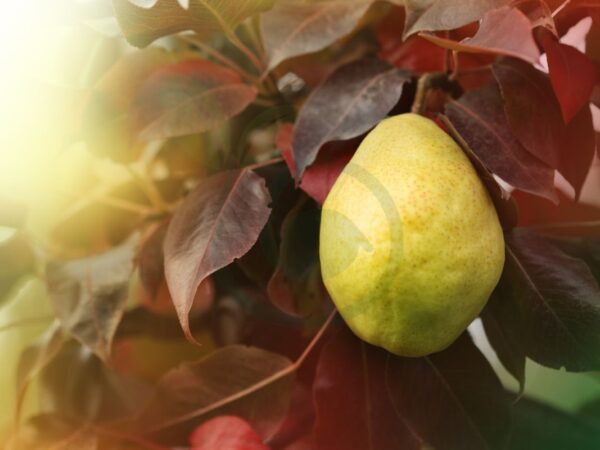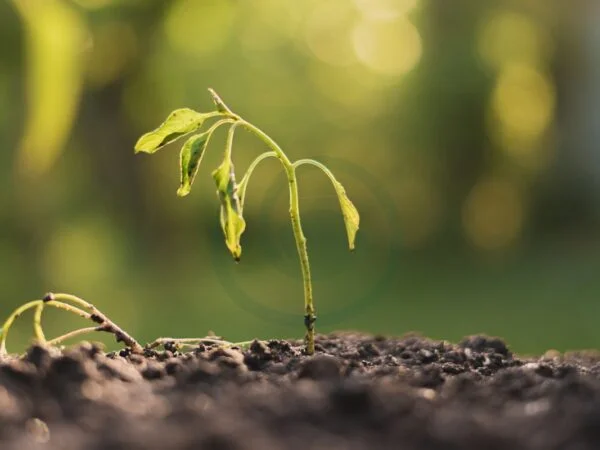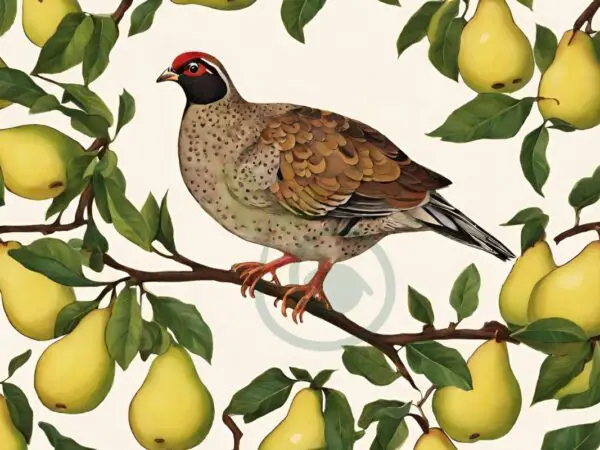Looking to keep your Bradford Pear tree in top shape? Knowing how to trim a Bradford Pear tree is crucial for its health and aesthetics. Whether you're a seasoned gardener or just starting, mastering this skill can make a significant difference in the tree's growth. However, it's essential to understand the contrast between proper trimming techniques and harmful practices that can harm your beloved tree.
Trimming at the right time with the correct methods can promote healthy fruit growth and prevent potential issues down the road. In this guide, we'll walk you through step-by-step instructions on how to trim a Bradford Pear tree effectively, ensuring it thrives for years to come.
Key Takeaways
- Timing is Key: Trim Bradford pear trees during late winter or early spring to promote healthy growth.
- Use the Right Tools: Ensure you have sharp and clean pruning tools to make precise cuts and prevent damage to the tree.
- Prioritize Safety: Always wear protective gear like gloves and goggles when trimming to prevent injuries.
- Technique Matters: Cut at a 45-degree angle just above a bud to encourage proper healing and new growth.
- Promote Tree Health: Practice selective pruning to remove dead, diseased, or crossing branches for the tree's well-being.
- Regular Maintenance is Crucial: Keep an eye on weak branches and address them promptly to prevent potential hazards.
Understanding Bradford Pear Trees
Understanding Bradford Pear Trees
Bradford pear trees start with a pyramidal shape, evolving into a rounded form as they age. Their branches grow densely and upright, reaching heights of up to 50 feet with a spread of around 30 feet. These trees are cherished for their stunning white blossoms in spring, offering ample shade during summer and vibrant foliage in the fall.
Pros:
- Beautiful white blossoms
- Provides shade in summer
- Aesthetic appeal with fall foliage
Cons:
- Weak branch attachments
- Offensive odor from flowers
- Non-edible fruit resembling small pears
Growth Patterns
Initially, young Bradford pear trees have a pyramid-like silhouette that transforms into a more circular shape over time. The branches tend to grow upwards and closely together. As they mature, these trees can become quite substantial in height and width.
When pruning your Bradford pear tree, it's crucial to consider its growth patterns. Trimming should focus on maintaining the tree's structural integrity while promoting healthy growth. Removing dead or crossing branches helps prevent overcrowding and enhances air circulation within the canopy.
Steps for Trimming:
- Inspect the tree for any damaged or diseased branches.
- Use sharp pruning shears to make clean cuts at an angle.
- Remove any suckers or water sprouts growing near the base.
- Trim back long or unruly branches to maintain shape and balance.
Positive Aspects
One significant advantage of Bradford pear trees is their ability to produce beautiful white blooms that adorn landscapes in early springtime—these blossoms add charm and elegance to gardens while attracting pollinators like bees.
Essential Tools for Trimming
When trimming a Bradford pear tree, safety gear is crucial. Equip yourself with gloves, goggles, and sturdy footwear to safeguard against potential injuries from falling branches or debris. Prioritize personal safety above all when working with trees.
For pruning a Bradford pear tree, essential tools include hand pruners, loppers, and a pruning saw. Hand pruners are perfect for small branch cuts, while loppers are ideal for thicker branches that need trimming. A pruning saw becomes necessary when it's time to remove larger limbs.
Safety Gear:
- Gloves help protect your hands during the trimming process.
- Goggles prevent any debris from getting into your eyes while working.
- Sturdy footwear ensures stability and protects your feet from potential hazards.
Pruning Tools:
- Hand pruners are great for precise cuts on smaller branches.
- Loppers provide leverage to cut through thicker branches effectively.
- A pruning saw is essential for cutting off larger limbs safely without damaging the tree.
Key Timing for Trimming
Seasonal Guidance
Trimming a Bradford pear tree should ideally be done in late winter or early spring, when the tree is dormant. This period ensures minimal stress on the tree and promotes healthy growth. Avoid pruning during summer as it can strain the tree and impede its development. Pruning in late fall could expose the tree to diseases and pests due to open wounds that may not heal properly.
It's crucial to consider the season while planning your trimming schedule. For example, waiting until late winter allows you to assess any winter damage before making cuts. Avoiding summer pruning helps conserve the tree's energy for essential processes like root development.
Young Bradford pear trees typically require less aggressive pruning than older ones because they are still establishing their structure. Older trees might need more extensive trimming to maintain their shape and structural integrity over time. When deciding how much to prune, take into account factors such as age, overall health, and previous maintenance practices of the tree.
For instance, if you have a young Bradford pear tree with minimal growth issues, light pruning focused on removing dead branches may suffice. However, an older specimen that has not been pruned regularly might benefit from more thorough trimming sessions aimed at shaping its canopy and improving airflow within the branches.
Safety Concerns with Trimming
When trimming a Bradford pear tree, it is crucial to prioritize safety. Firstly, ensure your personal safety by wearing protective gear like gloves, goggles, and sturdy footwear. When working at heights, always practice caution and follow proper ladder safety guidelines to avoid any accidents.
Moreover, be mindful of your surroundings while trimming the tree. Avoid working near power lines as they pose a significant hazard during the trimming process. Ensuring these safety measures are in place will help prevent any potential injuries or accidents during the trimming activity.
Regular pruning plays a vital role in maintaining the overall well-being of a Bradford pear tree. By improving air circulation and sunlight penetration through proper pruning techniques, you can promote healthy growth for the tree. Removing dead or diseased branches not only enhances the aesthetic appeal but also prevents infections from spreading throughout the tree.
Furthermore, employing correct pruning methods reduces stress on the tree and encourages robust growth patterns. By adopting these practices regularly while trimming your Bradford pear tree, you contribute to its longevity and vitality.
Proper Techniques for Trimming
Pruning Basics
To trim a Bradford pear tree effectively, start by getting rid of any dead, damaged, or crossing branches. This step ensures the tree's health and prevents potential hazards. Maintaining a balanced structure is crucial; selectively thin out crowded areas to promote healthy growth patterns. Remember not to overdo it with excessive pruning as this can weaken the tree's overall structure.
When pruning your Bradford pear, focus on thinning out branches strategically. By removing some smaller interior branches, you improve airflow within the canopy and reduce density. This technique helps safeguard against wind damage while allowing sunlight to reach lower parts of the tree. For optimal results, ensure that thinning is done evenly throughout the canopy.
Selective Pruning for Health and Aesthetics
Identifying the right branches is crucial. Look for branches that cross or rub against each other as they can cause damage. Remove inward-growing branches to maintain an open structure within the tree. Start by prioritizing dead, diseased, or weak branches for removal to enhance the overall health of the tree.
To keep your Bradford pear tree looking its best, focus on maintaining its shape through regular pruning. Aim for symmetry and balance when trimming to ensure a visually appealing appearance. Take a step back periodically while pruning to evaluate the tree's shape from different angles and make adjustments as necessary. Avoid overly aggressive pruning that could drastically change the natural form of the tree, as this may impact both its health and aesthetics negatively.
Addressing Weak Branches
Identification
Bradford pear trees are easily recognizable by their distinct shape, which is pyramidal when young and becomes rounder as they mature. Their glossy green leaves have a slightly wavy edge and transform into vibrant hues of red, orange, or purple during the fall season. In early spring, before the leaves appear, these trees bloom white flowers with a potent fragrance.
Look for limbs that are crossing or rubbing against each other. These branches can cause damage over time due to friction and may hinder healthy growth patterns. Inspect for any dead or diseased branches that could potentially harm the overall well-being of the tree.
Removal Process
To maintain the health and aesthetics of your Bradford pear tree while addressing weak branches, it's essential to follow proper removal techniques. When dealing with larger limbs that require trimming, utilize a three-cut method to prevent tearing bark and causing unnecessary harm to the tree. Begin by making an undercut about 12 inches away from the branch collar; this initial cut helps prevent bark stripping when removing the branch.
Following the undercut, proceed with a top cut further out from where you made your first incision. This strategic approach ensures clean cuts without damaging surrounding areas on the tree trunk or limb itself. Finally, complete the process by making a final cut just outside of the branch collar to eliminate any remaining stub left after pruning off weak sections.
Managing Tree Concerns
Dealing with Odor
If the smell of Bradford pear tree flowers bothers you, try planting other trees with more pleasant scents. Regular pruning can also help reduce flower production and minimize the odor. To limit exposure indoors, keep windows closed during peak blooming periods.
To manage the unpleasant odor effectively, consider alternatives like planting magnolia or dogwood trees known for their delightful fragrances. Incorporating jasmine vines near your home can provide a sweet-smelling solution to combat any lingering Bradford pear scent.
- Consider planting alternative flowering trees
- Keep windows closed during peak blooming
- Regular pruning to reduce flower production
Handling Fruit
When dealing with fruit from a Bradford pear tree, it's essential to wear gloves as they may cause skin irritation in some individuals. Promptly dispose of fallen fruit to prevent attracting pests or diseases that could harm your tree or garden.
Avoid using Bradford pear fruits for culinary purposes due to their gritty texture and less-than-appetizing taste. By refraining from consuming or cooking with these fruits, you eliminate potential health risks associated with their consumption.
Proper Maintenance Post-Trimming
Aftercare Tips
After you've trimmed a Bradford pear tree, it's crucial to provide proper aftercare to ensure its health and vitality. Start by applying a thin layer of mulch around the tree's base. This helps retain moisture in the soil and prevents weed growth, giving your tree the best conditions for recovery. Make sure to water the tree deeply post-trimming. This extra hydration aids in reducing stress on the tree caused by pruning activities.
In the weeks following pruning, keep a close eye on your Bradford pear tree for any signs of stress or disease. Look out for wilting leaves, unusual discoloration, or pest activity as indicators that your tree might be struggling post-trim. Promptly addressing these issues can prevent further damage and promote faster healing for your beloved Bradford pear.
Regularly checking on the growth of your Bradford pear is essential for maintaining its overall well-being long-term. By monitoring its development closely, you can catch any potential problems early on before they escalate into more significant issues. Keep an eye out for any signs of disease such as leaf spots or abnormal growth patterns like stunted branches.
If you notice any structural imbalances or suspect pest infestations during your growth checks, take swift action to address them promptly. By staying vigilant and proactive in managing these concerns, you can help safeguard the health and appearance of your Bradford pear tree over time.
You've now gained a solid understanding of how to trim your Bradford Pear tree effectively. Equipped with the right tools, knowledge of timing, safety precautions, proper techniques, and strategies for selective pruning, you're ready to enhance both the health and aesthetics of your tree. Remember to address weak branches promptly and manage any concerns that may arise during the trimming process. Post-trimming maintenance is crucial for the continued well-being of your tree.
Now it's time to put your newfound knowledge into action. Grab those tools, head out to your Bradford Pear tree, and start trimming with confidence. Your tree will thank you with healthier growth and a more appealing appearance. Get out there and give your Bradford Pear the care it deserves!
Frequently Asked Questions
How can I identify weak branches on my Bradford Pear tree?
Inspect your tree for branches with V-shaped narrow angles, cracks, or signs of decay. These are indicators of weak branches that may need pruning to prevent potential hazards.
When is the best time to trim a Bradford Pear tree?
Late winter or early spring before new growth begins is ideal for trimming Bradford Pear trees. Avoid trimming during late summer or fall to prevent stressing the tree.
What safety precautions should I take when trimming a Bradford Pear tree?
Always wear appropriate safety gear like gloves, goggles, and sturdy shoes. Use sharp tools and make cuts at the right angle to avoid accidents. Consider consulting an arborist for large-scale trimming tasks.
How do I properly maintain my Bradford Pear tree after trimming?
Regularly monitor your tree for new growth patterns, pests, or diseases post-trimming. Water it adequately during dry spells and fertilize as needed following recommended guidelines for optimal health and growth.
Can selective pruning benefit both the health and aesthetics of my Bradford Pear tree?
Yes, selective pruning removes dead/diseased branches while shaping the canopy for better air circulation and sunlight penetration. This promotes overall health while enhancing the visual appeal of your tree.
Image Source: Paid image from CANVA




